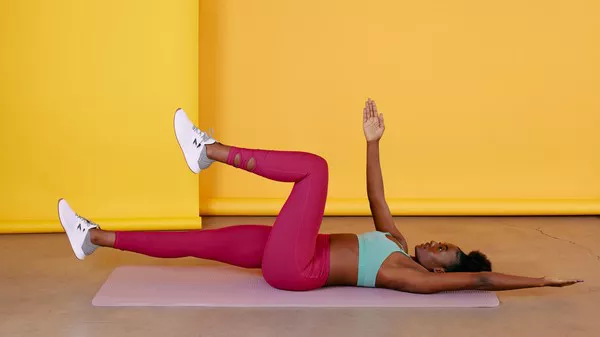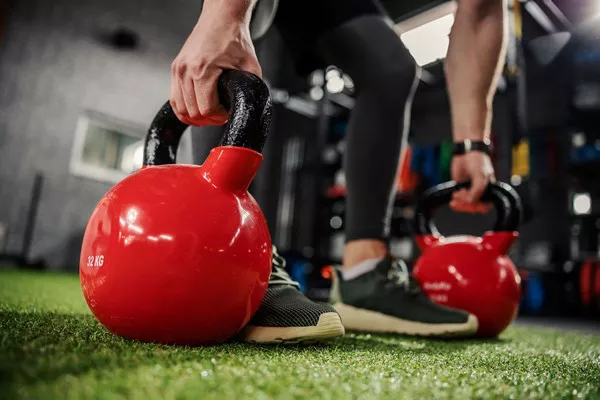Strength training is a crucial aspect of fitness for females, offering numerous benefits such as improved muscle tone, enhanced metabolism, increased bone density, and better overall health. Starting a strength training routine at home can be empowering and convenient, allowing you to tailor your workouts to your schedule and preferences. This comprehensive guide will help you get started with strength training at home as females, covering everything from basic principles to advanced techniques.
Understanding Strength Training
Before diving into the practical aspects, it’s important to understand the fundamentals of strength training.
What is Strength Training?
Strength training, also known as resistance training, involves exercises designed to improve muscular strength and endurance. This is achieved by working against some form of resistance, such as free weights, resistance bands, or your own body weight. The goal is to increase the ability of your muscles to generate force, which in turn improves overall physical performance and health.
Benefits of Strength Training for Females
Strength training offers a myriad of benefits, including:
Increased Muscle Mass: Helps in achieving a toned and sculpted physique.
Enhanced Metabolism: Muscle tissue burns more calories than fat tissue, even at rest.
Improved Bone Density: Reduces the risk of osteoporosis.
Better Joint Health: Strengthens the muscles around joints, providing better support.
Enhanced Mood and Energy Levels: Releases endorphins that boost mood and energy.
Improved Functional Fitness: Makes daily activities easier and reduces the risk of injuries.
Setting Up Your Home Gym
Creating a conducive environment for strength training at home is essential for consistency and motivation.
Choosing the Right Space
Select a space in your home that is:
Spacious Enough: To perform exercises without restrictions.
Well-Ventilated: Good airflow enhances comfort during workouts.
Quiet and Private: Minimizes distractions and ensures focus.
Essential Equipment
While strength training can be done with minimal equipment, having some basic tools can enhance your workouts:
Dumbbells: Versatile and effective for various exercises. Beginners can start with light weights (3-5 pounds) and gradually increase.
Resistance Bands: Offer variable resistance and are excellent for a range of exercises.
Yoga Mat: Provides comfort and stability during floor exercises.
Stability Ball: Useful for core exercises and improving balance.
Pull-Up Bar: Great for upper body strength, if space and setup allow.
Kettlebells: Another versatile tool for dynamic strength training exercises.
Optional Equipment
For those looking to expand their home gym, consider:
Adjustable Bench: For seated or reclined exercises.
Barbell and Plates: For advanced lifting.
Foam Roller: For muscle recovery and flexibility.
Designing Your Strength Training Routine
A well-structured routine is key to effective strength training. Here’s how to design a balanced program:
Assessing Your Fitness Level
Before starting, evaluate your current fitness level. Consider factors like:
Previous Exercise Experience: Whether you’ve done any strength training before.
Current Physical Condition: Any existing injuries or health concerns.
Fitness Goals: What you aim to achieve, such as muscle gain, fat loss, or improved endurance.
Setting Realistic Goals
Set SMART goals (Specific, Measurable, Achievable, Relevant, Time-bound). For example:
Short-Term Goal: Perform 10 push-ups consecutively within a month.
Long-Term Goal: Increase dumbbell shoulder press weight by 10 pounds in six months.
Creating a Balanced Workout Plan
A comprehensive strength training program should target all major muscle groups. A typical weekly schedule might include:
Day 1: Upper Body
Exercises: Push-ups, dumbbell shoulder press, bicep curls, tricep dips
Day 2: Lower Body
Exercises: Squats, lunges, deadlifts, calf raises
Day 3: Core and Stability
Exercises: Planks, Russian twists, leg raises, stability ball exercises
Day 4: Rest or Active Recovery
Activities: Light yoga, stretching, walking
Day 5: Full Body
Combination of upper and lower body exercises with a focus on compound movements
Day 6: Rest or Active Recovery
Activities: Light yoga, stretching, walking
Day 7: Rest or Active Recovery
Activities: Light yoga, stretching, walking
Progressive Overload
To see continuous improvement, gradually increase the difficulty of your workouts. This can be achieved by:
Increasing Weight: Gradually lift heavier weights.
Increasing Repetitions or Sets: Add more repetitions or sets to your exercises.
Decreasing Rest Time: Shorten the rest periods between sets.
Varying Exercises: Introduce new exercises to challenge different muscle groups.
See Also: How to Prevent Allergic Rhinitis in the Morning: A Full Guide
Executing the Exercises
Proper form and technique are crucial to prevent injuries and maximize benefits. Here are some fundamental exercises and how to perform them:
Upper Body Exercises
Push-Ups:
Start in a plank position with hands shoulder-width apart.
Lower your body until your chest nearly touches the floor.
Push back up to the starting position.
Dumbbell Shoulder Press:
Sit or stand with dumbbells at shoulder height, palms facing forward.
Press the weights overhead until arms are fully extended.
Lower back to shoulder height.
Lower Body Exercises
Squats:
Stand with feet shoulder-width apart.
Lower your hips back and down as if sitting in a chair.
Keep your chest up and knees behind your toes.
Return to standing.
Lunges:
Step forward with one leg, lowering your hips until both knees are bent at 90 degrees.
Push back up to the starting position and switch legs.
Core Exercises
Planks:
Start in a forearm plank position with elbows directly under shoulders.
Keep your body in a straight line from head to heels.
Hold for as long as possible.
Russian Twists:
Sit on the floor with knees bent and feet flat.
Lean back slightly and hold a weight or a ball with both hands.
Rotate your torso from side to side, tapping the weight on the floor beside you.
Staying Motivated and Consistent
Maintaining motivation and consistency is key to long-term success in strength training.
Tracking Progress
Keep a workout journal to log your exercises, weights, sets, and repetitions. Tracking your progress helps you stay motivated and see improvements over time.
Setting Mini Goals
In addition to your main fitness goals, set smaller, achievable goals to keep you motivated. These can include mastering a new exercise, increasing the number of repetitions, or reducing rest times.
Mixing Up Your Routine
Avoid monotony by varying your workouts. Incorporate different exercises, change the order of your routine, or try new workout formats like circuit training or HIIT (High-Intensity Interval Training).
Finding a Workout Buddy
Having a workout partner can boost motivation and accountability. If you can’t find someone to train with in person, consider virtual workout sessions with friends or joining online fitness communities.
Listening to Your Body
Pay attention to your body’s signals. Rest when needed and avoid pushing through pain. Proper recovery is crucial for muscle growth and overall well-being.
Nutrition and Recovery
Proper nutrition and recovery are essential components of a successful strength training program.
Balanced Diet
Fuel your body with a balanced diet rich in:
Proteins: Essential for muscle repair and growth. Include sources like lean meats, fish, eggs, dairy, beans, and nuts.
Carbohydrates: Provide energy for workouts. Opt for whole grains, fruits, and vegetables.
Fats: Necessary for overall health. Include healthy fats from sources like avocados, nuts, and olive oil.
Hydration: Stay well-hydrated to support muscle function and recovery.
Post-Workout Nutrition
Consume a combination of protein and carbohydrates within 30 minutes of your workout to aid muscle recovery and replenish glycogen stores. Examples include a protein shake with a banana or Greek yogurt with berries.
Rest and Recovery
Allow your muscles to recover by incorporating rest days into your routine. Aim for 7-9 hours of quality sleep each night to support recovery and overall health.
Advanced Techniques and Tips
Once you’ve built a solid foundation, consider incorporating advanced techniques to further enhance your strength training.
Supersets
Perform two exercises back-to-back with little to no rest in between. This increases intensity and reduces workout time. For example, pair bicep curls with tricep dips.
Pyramid Training
Increase the weight and decrease the repetitions with each set of an exercise. For example, start with 12 repetitions at a light weight, then 10 reps at a medium weight, and finish with 8 reps at a heavier weight.
Drop Sets
Perform an exercise to failure, then immediately reduce the weight and continue to perform more repetitions. This technique is excellent for muscle hypertrophy.
Tempo Training
Manipulate the speed of your repetitions to increase time under tension. For example, take 3 seconds to lower the weight, pause for 1 second, and then lift in 1 second.
Conclusion
Starting strength training at home is an empowering and effective way for females to enhance their physical health, build strength, and achieve their fitness goals. By understanding the fundamentals, setting up a conducive workout space, designing a balanced routine, and staying motivated, you can create a sustainable and rewarding strength training regimen. Remember, consistency is key, and with dedication and the right approach, you’ll see significant improvements in your strength, health, and overall well-being.
[inline_related_posts title=”You Might Be Interested In” title_align=”left” style=”list” number=”6″ align=”none” ids=”9932,9880,9843″ by=”categories” orderby=”rand” order=”DESC” hide_thumb=”no” thumb_right=”no” views=”no” date=”yes” grid_columns=”2″ post_type=”” tax=””]



































